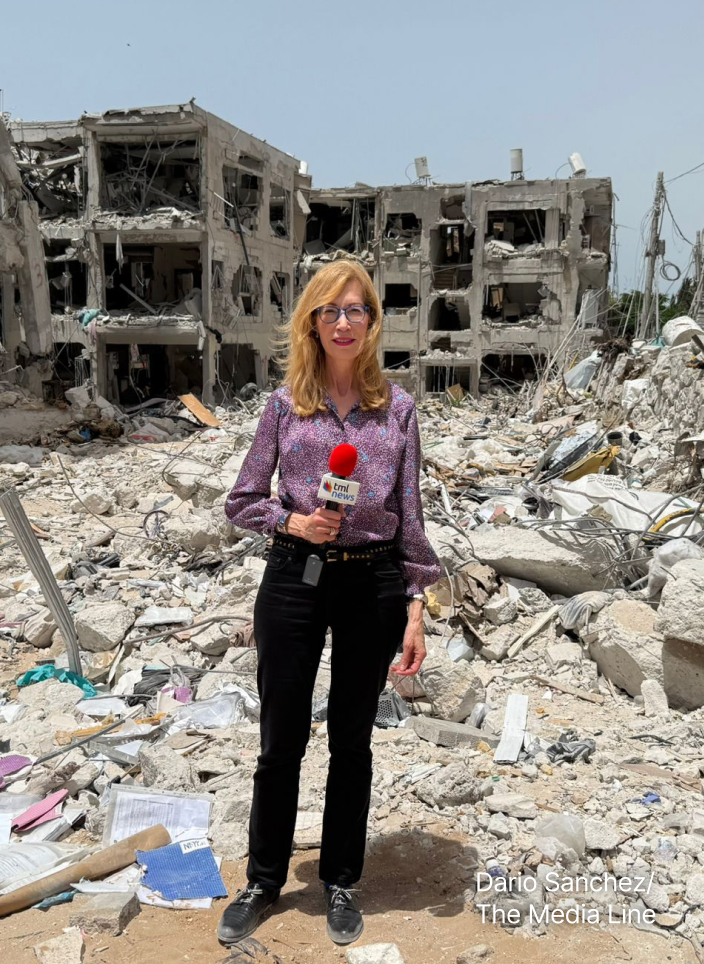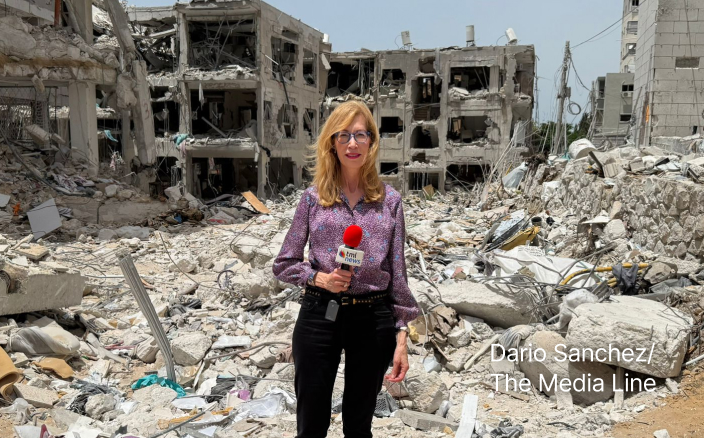The war that has engulfed the Middle East for the past fifteen months has reached a critical juncture. Recent developments in both the region and the United States could lead to a shift in direction, potentially further changing the landscape of one of the world’s most volatile areas.
Although a ceasefire is currently being maintained between Israel and Hamas in Gaza and between Israel and Hezbollah in Lebanon, the fragile arrangements hang in the balance as Israel has yet to conclude its efforts against the two terrorist groups. All the while, Israel is conducting a large-scale military operation in the West Bank against Hamas and other terrorist groups. In Syria, Israel is monitoring developments after the collapse of the Assad regime at the end of last year, maintaining a contentious military presence on Syrian territory.
Israeli Prime Minister Benjamin Netanyahu returned to Israel on Sunday after meeting with US President Donald Trump in Washington last week. During Netanyahu’s visit, Trump stunned the world by offering to evict almost two million Palestinians from Gaza for the US to take over the war-torn territory.
Trump is trying to pressure the local actors to come up with ideas to resolve this one way or another. What Trump is holding over Hamas and the Arab states is that if Hamas doesn’t agree to something he deems is reasonable, he will give Israel the green light to finish off Hamas.
“Trump is trying to pressure the local actors to come up with ideas to resolve this one way or another,” Professor Jonathan Rynhold, head of the Department of Political Studies at Bar-Ilan University, told The Media Line. “What Trump is holding over Hamas and the Arab states is that if Hamas doesn’t agree to something he deems is reasonable, he will give Israel the green light to finish off Hamas.”
Three Israeli hostages being held by Hamas since the beginning of October 7, 2023, were released on Saturday as part of the current ceasefire agreement. The images of three emaciated men conjured conflicting sentiments in Israel. On the one hand, their frail condition highlighted the urgency for all of the remaining 76 hostages to be released. On the other hand, their skeletal appearance and testimony of the subhuman conditions they were held in conjured anger among Israelis and strengthened their determination to eradicate Hamas. These sentiments are the epitome of the two conflicting goals Netanyahu set out at the beginning of the war—the release of all of the hostages and the removal of Hamas in power from the Gaza Strip.
The paradox is that the war hanging over Hamas and the threat that they might be annihilated makes them give up. But, equally, if they think Israel will go through with it, then they have got nothing to lose. Israel is beginning to lay out its terms—which is that Hamas leaves Gaza and doesn’t rule there. Israel will not get everything it wants.
“The paradox is that the war hanging over Hamas and the threat that they might be annihilated makes them give up. But, equally, if they think Israel will go through with it, then they have got nothing to lose,” said Rynhold. “Israel is beginning to lay out its terms—which is that Hamas leaves Gaza and doesn’t rule there. Israel will not get everything it wants.”
The Israeli war cabinet is scheduled to meet later this week to discuss the possible second stage of the ceasefire with Hamas. This stage could bring finality to the war in Gaza and is politically contentious.
Israel demands Hamas’ disarmament and the demilitarization of Gaza, the release of all the hostages and the conditions for the rehabilitation of the Gaza Strip. This strategy needs to be formulated in the cabinet before negotiations begin.
“Israel demands Hamas’ disarmament and the demilitarization of Gaza, the release of all the hostages and the conditions for the rehabilitation of the Gaza Strip,” Yoni Ben Menachem, an expert on Middle Eastern affairs from Jerusalem Center for Security and Foreign Affairs, told The Media Line. “This strategy needs to be formulated in the cabinet before negotiations begin.”
Hamas’ October 7, 2023, attack, which stunned Israel, was the opening shot of a regional war that has yet to be concluded. Approximately 1,200 Israelis were killed in one day, thousands more were wounded, and Hamas took 250 people hostage. Over 100 of them were released in a temporary truce a month later. During the war, some bodies of hostages have been recovered, and few have been rescued alive. Seventy-six Israelis are still in captivity, as 21 of them have been released as part of the recent agreement. Many of the remaining hostages are believed dead.
According to the Health Ministry in the Hamas-run territory, over 47,000 Palestinians have been killed. The death toll does not distinguish between terrorists and civilians. Israel maintains many of the dead are terrorists. UN figures suggest almost 90% of the population has been displaced several times due to Israeli military maneuvers. Entire neighborhoods and other buildings have been reduced to rubble by incessant air strikes.
Give the gift of hope
We practice what we preach:
accurate, fearless journalism. But we can't do it alone.
- On the ground in Gaza, Syria, Israel, Egypt, Pakistan, and more
- Our program trained more than 100 journalists
- Calling out fake news and reporting real facts
- On the ground in Gaza, Syria, Israel, Egypt, Pakistan, and more
- Our program trained more than 100 journalists
- Calling out fake news and reporting real facts
Join us.
Support The Media Line. Save democracy.


As part of the agreement, Israel has almost completely withdrawn its forces from the Gaza Strip. It remains in the Philadelphi corridor along the border between Gaza and Egypt and is expected to do so at least for the first part of the ceasefire. The corridor served as Hamas’ main lifeline in its quest to arm itself in the past two decades since Israel withdrew from Gaza. The second phase of a ceasefire could see a withdrawal from Philadelphi as well, signaling the end of Israeli presence in the Gaza Strip.
Israel’s demands will likely be met with Hamas’ refusal, essentially railroading the negotiations. What we will likely see is the extension of the first phase of the ceasefire during which Israeli hostages will continue to be released in increments in return for Palestinian prisoners.
“Israel’s demands will likely be met with Hamas’ refusal, essentially railroading the negotiations,” said Ben Menachem. “What we will likely see is the extension of the first phase of the ceasefire during which Israeli hostages will continue to be released in increments in return for Palestinian prisoners.”
“This will be done in order to avert a crisis and the resumption of the war,” Ben Menachem added, saying this is a desired outcome for the American president as well. “This does not spell the end of the war, however.”
“Israel wants to see more hostages released without having to agree to end the war,” said Rynhold.
According to Ben Menachem, for Trump to implement his plan of a US takeover of Gaza without the presence of American troops on the ground, Israel will have to engage in intense fighting after the release of the majority of the hostages.
This means there is a bigger war on the horizon. But Israel cannot make any move without coordination with Trump, and Netanyahu will not dare to reach a confrontation with him.
“This means there is a bigger war on the horizon,” he said. “But Israel cannot make any move without coordination with Trump, and Netanyahu will not dare to reach a confrontation with him.”
On Sunday, Israeli Finance Minister and leader of the far-right ultra-nationalist Religious Zionism party, Bezalel Smotrich, repeated his objection to the second phase of a ceasefire with Hamas.
“There will be no deal that keeps Hamas in power and allows it to plan the 7th of October of next year. Absolutely not,” Smotrich posted on his X account in response to the release of the three Israeli hostages on Saturday. “Hamas and everyone and everything connected to it in the Gaza Strip and outside it must be destroyed and wiped off the face of the earth so that there will not be a single person on earth who would think of kidnapping Jews and treating them this way again.”
The objection of Smotrich and his party to the end of the war in Gaza could signal political trouble for Netanyahu, who relies on them to stabilize his coalition. Trump’s plan for Gaza was welcomed by the Israeli right-wing because it aligns with their ideology.
The international community has widely condemned the proposal as a form of ethnic cleansing.
“Trump has created a way to get the Israeli government to agree to more compromises on the ceasefire because they can see down the line that they can well get more than they ever thought they could,” said Rynhold. “So, Netanyahu has to go along with Trump, who wants an end to the conflict. He is putting more pressure on Netanyahu to agree to whatever ceasefire terms Trump wants, and he has made it easy for Netanyahu to agree.”
Later this month, both Jordanian King Abdullah and President Abdel-Fattah El Sisi of Egypt are expected to visit the White House to discuss Trump’s plans for Gaza and other regional developments.
Meanwhile, the Israeli military continues to operate in the West Bank against an uptick in violence in the area and to thwart an attack similar to the one carried out by Hamas from Gaza towards southern Israel on October 7, 2023.
This is a major threat against Israel and a significant challenge to it.
“This is a major threat against Israel and a significant challenge to it,” said Ben Menachem.
Far-right elements of the Israeli government are keen to declare sovereignty over the territories, which are viewed by much of the international community as part of a future Palestinian state. While hosting Netanyahu in the White House, Trump alluded to an American agreement to Israeli sovereignty, in another move that could appease Netanyahu’s political partners to compromise on Gaza.
“Netanyahu doesn’t want it to explode, while his far-right coalition does want it to,” said Rynhold.
The extension of Israel’s ceasefire with Hezbollah ends next week. By then, Israeli troops are to withdraw from southern Lebanon and see the full deployment of the Lebanese army instead. Meanwhile, the Israeli military continues to conduct airstrikes against Hezbollah targets, and it is unclear whether it will complete its withdrawal, citing a continued threat to its population in the north of the country.
“This will also have to be coordinated with the Trump administration,” said Ben Menachem. “Israel wants to stay in certain strategic locations, and with American backing, this will be possible.”
US Secretary of State Marco Rubio will reportedly visit Israel and several Arab states next week. His visit could clarify the region’s future.
“What normally happens for Israel during wars is that the US puts its foot down and says, ‘that’s enough,’ at which point Israel has to make the best of it,” said Rynhold.